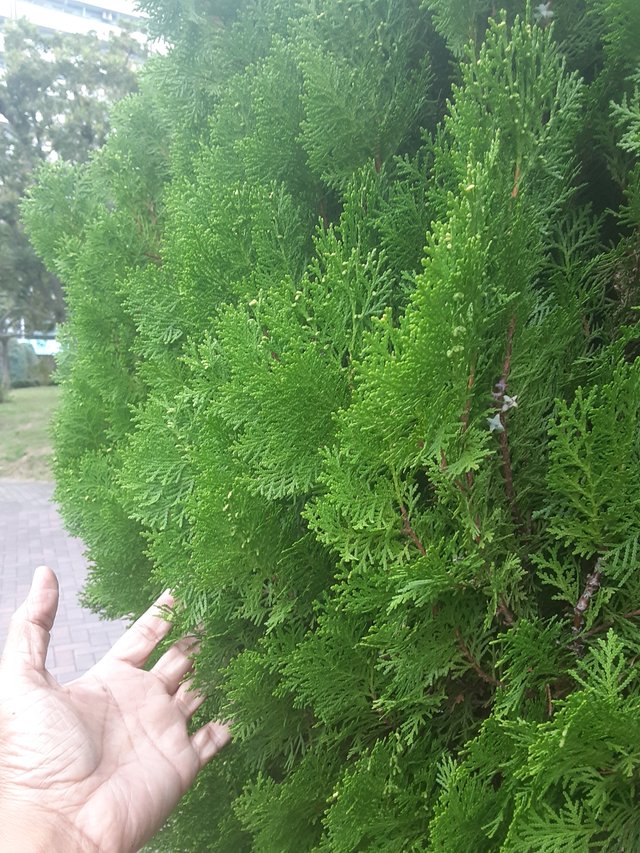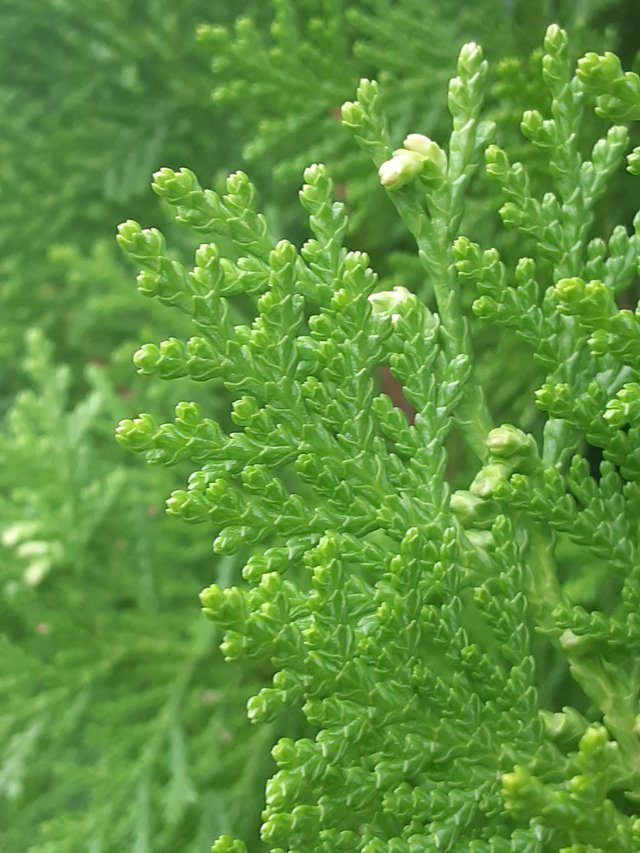
Thuja occidentalis, commonly known as northern white-cedar, eastern white-cedar, or arborvitae, is a coniferous evergreen tree native to eastern Canada and much of the northeastern and north-central United States. It is a popular ornamental tree due to its pyramidal shape, dense foliage, and adaptability to various climates.
One of the most distinctive features of Thuja occidentalis is its unique leaf structure. The leaves are scale-like and arranged in opposite pairs on flattened branchlets. Each scale-like leaf is about 2 millimeters long and has a pointed tip. The upper surface of the leaves is a bright green color, while the lower surface is a paler green. In winter, the leaves may turn a yellowish-brown color.
The arrangement of the leaves on the branchlets is also noteworthy. The leaves on the upper surface of the branchlet are flat, while the leaves on the lower surface are folded. This arrangement creates a dense, overlapping pattern that helps to protect the tree from cold temperatures and water loss.

The leaves of Thuja occidentalis also contain aromatic oils that give the tree a pleasant fragrance. These oils have been used for centuries in traditional medicine and aromatherapy. The tree's wood is also prized for its durability and resistance to rot, making it a popular choice for construction and woodworking.
Overall, the leaves of Thuja occidentalis are an important part of the tree's overall appearance and function. Their unique structure, color, and arrangement contribute to the tree's aesthetic appeal and its ability to thrive in a variety of environments.
Ref.:
 |  |
Upvoted! Thank you for supporting witness @jswit.
Downvoting a post can decrease pending rewards and make it less visible. Common reasons:
Submit
You've got a free upvote from witness fuli.
Peace & Love!
Downvoting a post can decrease pending rewards and make it less visible. Common reasons:
Submit